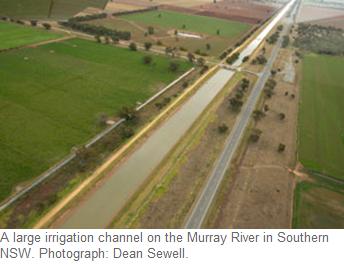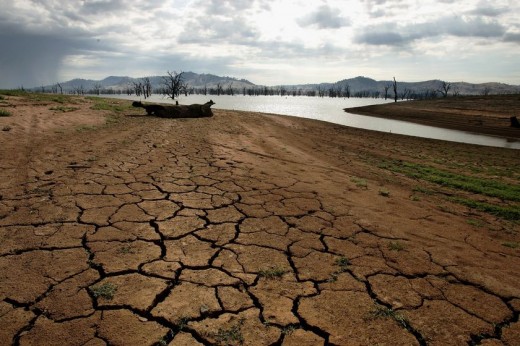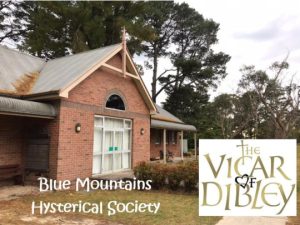‘Water Buyback’ can save Murray-Darling
Wednesday, August 17th, 2011
.
Economists say water buybacks can save the Murray-Darling River
A senior economist at The Australian National University (ANU) says that subsidising water infrastructure will not deliver the volumes of water needed to return the Murray-Darling River system to health.
Professor Quentin Grafton from the Crawford School of Economics and Government at the ANU says that despite the Australian Government making commitments to spending $5.8 billion on infrastructure designed to increase water efficiency, this will have little impact on increasing flows through the ailing system.
“That’s probably going to get the government about 500 gigalitres. So to put that in perspective, that’s a fraction of the sorts of numbers we need in terms of volumes for the rivers“, said Prof. Grafton.
“By contrast, if we were to purchase water entitlements from willing sellers, we can get the volumes that we need”.
.
Water Buyback a Sound Approach
.
The Productivity Commission has supported this view, calling for some of the money allocated to infrastructure to be redirected to other initiatives, including water buybacks from willing sellers and support for affected communities.
“A general conclusion is that purchasing water from willing sellers is a sound approach to meeting the Australian Government’s commitment to obtain additional water for the environment. Indeed, it should be the preferred method for recovering water, taking precedence over subsidising investment in water saving infrastructure“, concluded the Commission.
While big irrigation companies continue their scare campaign saying that water buybacks will have a negative economic impact on the agricultural industry, a model proposed by Prof. Grafton concluded that irrigators would be adequately compensated.
“If the $8.9 billion currently budgeted for water reform were spent in a cost effective manner on the purchase of water entitlements rights from willing sellers, and with no arbitrary restrictions on water trade, the Australian government would be able to increase environmental flows by at least 4,000 gigalitres per year, fully compensate irrigators for reduced extractions, and have funds left over.”
This is a much better alternative than committing massive financial resources to infrastructure that will not save the Murray-Darling River.
 ^http://annamariacom.blogspot.com/2010/10/murray-darling-basin.html
^http://annamariacom.blogspot.com/2010/10/murray-darling-basin.html
.
More Willing Sellers than Tenders
.
Far from being unpopular with many farmers, recent tenders for water buybacks have been oversubscribed, with the majority of sellers only parting with a portion of their entitlements and using the capital raised to improve efficiency or diversify their businesses.
The Australian Government needs to spend the $10 billion of taxpayers’ money allocated to save the river system wisely and ensure the rivers flow, or give the Australian people their money back.
With the health of the rivers and the communities that rely on them at stake, we need economically responsible action that ensures that the rivers keep flowing whilst building stronger, more economically diverse and sustainable rural communities.
Prof. Grafton concluded that, “Unless we spend most of the money on the buying of the water entitlements, we won’t have sufficient flows for the rivers, and that’s a critical point. Because otherwise, we’ll end up spending billions and billions of dollars, we won’t get sufficient volumes for the rivers so we’ll have the problem we’ve gone through in the last few years come back again.”
“The communities will continue to be in a trouble because they won’t get the support that they need, and we’ll end up in a few years time with lots of concrete channels but no water”.
[Source: ^http://www.wilderness.org.au/regions/new-south-wales/water-buybacks-can-save-the-river] Andrew Tatnell, dying River red gums at Chowilla, South Australia in 2004
Photo by Andrew Tatnell
[Source: ^http://www.sauer-thompson.com/archives/opinion/2004/04/ironbar-cracks-again.php]
Andrew Tatnell, dying River red gums at Chowilla, South Australia in 2004
Photo by Andrew Tatnell
[Source: ^http://www.sauer-thompson.com/archives/opinion/2004/04/ironbar-cracks-again.php]
.
.
Further Reading:
.
[1] ‘Modelling Water Trade in the Southern Murray-Darling Basin‘, 2004, by The Productivity Commission, ^http://www.pc.gov.au/__data/assets/pdf_file/0003/60474/watertrade.pdf
[2] Murray Darling Basin Authority, ^http://www.mdba.gov.au/basin_plan
[3] ABC Four Corners, background reading on the Murray-Darling Basin Plan, 2011, ^http://www.abc.net.au/4corners/content/2011/s3157128.htm
[4] Hawke Institute, University of South Australia, ^http://www.unisa.edu.au/hawkeinstitute/research/ecosocial/eco-case-study.asp
[5] Murray Darling Association, ^http://www.mda.asn.au/index.cfm?objectid=531DFD7D-D372-0C96-D485B3EAC56F6BF9
[6] Act Now, ^http://www.actnow.com.au/Issues/MurrayDarling_Basin.aspx
[7] Save the Murray, ^http://www.savethemurray.com/
[8] Murray Futures, ^http://www.murrayfutures.sa.gov.au/lower.php
[9] Hurry Save the Murray, ^http://hurrysavethemurray.com/
[10] Murray Darling & the Coorong, ^http://rachel-siewert.greensmps.org.au/content/speech/murray-darling-coorong [extract of speech below]
.
.
Murray Darling & the Coorong
.
“I rise to speak to the motion to take note of the response of the Minister for Climate Change and Water, Senator Wong, representing the Minister for the Environment, Heritage and the Arts, to a question relating to the Murray-Darling river system. Today we had yet another report released on the health of the Murray.
It should come as no surprise, to those of us in particular who have been watching the Murray, that it finds that only one of 23 river valleys of the Murray that were examined had good ecosystem health. Two had moderate ecosystem health. All the rest-that is 20-had poor or very poor ecosystem health. This comes on the back of the report that was released yesterday-well, it was not released; it was leak-released.
On ABC radio the CEO of the Murray-Darling Basin Commission, Wendy Craik, said that the report had not ‘not been released‘; it just had not been released. That report, which had not been released but was not leaked, showed that scientists have said to the government that the Coorong has six months left. They have a six-month window of opportunity, and what is the ministerial council’s response? ‘Oh, we’ll commission some more work into that.’ That just happens to then be available in November. The window of opportunity to fix the Coorong, or to go to some measure to try to remediate the Coorong, closes in October.
.
The report that came out today shows yet again what a parlous state our Murray-Darling river system is in. And what is the government doing about it? Yes, it is buying some water and it is investing in fixing up infrastructure, but on a very ad hoc basis. It is like fiddling while Rome burns-‘We’ll set a new cap; we’ll put in place an authority, at some stage once we get the legislation back in, that will develop a plan for two years.’ But guess what? That plan does not come into effect until 2019. And the reason for that is that the federal government refuses to require New South Wales and Victoria to bring their water sharing plans into line with the basin, into line with the sustainable cap.
That means we will have a lovely plan, we will have planned very well, while the river is dying-because, unless we can curb water use and put into place sustainable water use in the extremely near future, we are going to be watching the river die. We will have a great plan but we will have no water to put back into the river because we are not requiring the states to implement any changes to their plans until 2019. That means no action until 2019, aside from what the government might be able to buy back from willing sellers. It does not do anything about addressing, with a systematic and strategic approach, long-term land use in the Murray-Darling Basin. It does not address what we think is going to be sustainable, not only in trying to address a severely degraded system but also in the face of climate change.
.
The CSIRO reports that are gradually being released as the work is done in each catchment-excellent work, I should say-are showing, as Senator Wong correctly pointed out, that the catchments are facing very severe consequences from the impact of climate change. We have over-allocated all the systems in the Murray-Darling system and we need to be addressing that now, not leaving it for some time off in the future.
.
Some of the ways that we can start addressing the issues around the Coorong now are to start looking at releasing water from the Meningie Lakes, to start looking at accessing some of the water that is currently held in storage in northern New South Wales and to start talking to farmers about loaning water-which, I would suggest, could be repaid with some benefits to the farmers into the future. But one of the issues that I understand is complicating matters there is the control of the New South Wales government over water in the Meningie Lakes. They control the water under 460 gigalitres, and the Commonwealth then gets to have a say in anything above, I think, 660 gigalitres. Guess what? If the level is kept below 660 gigalitres, where the Commonwealth get to have a say, it is all up to New South Wales.
So New South Wales can theoretically keep allocating water from that storage to maintain a level below the amount that the Commonwealth gets to have a say in. And guess what? There is no water to release to the Murray and into the Coorong lakes. If we cannot solve this issue in the Commonwealth’s brave new world of management of the Murray-Darling Basin, there is no hope. We are absolutely in a crisis situation in the Coorong, and yet the Commonwealth is still sitting on its hands and cannot, it appears, get that water from New South Wales and actually do something to save their own icon.”
.
– end of article –






